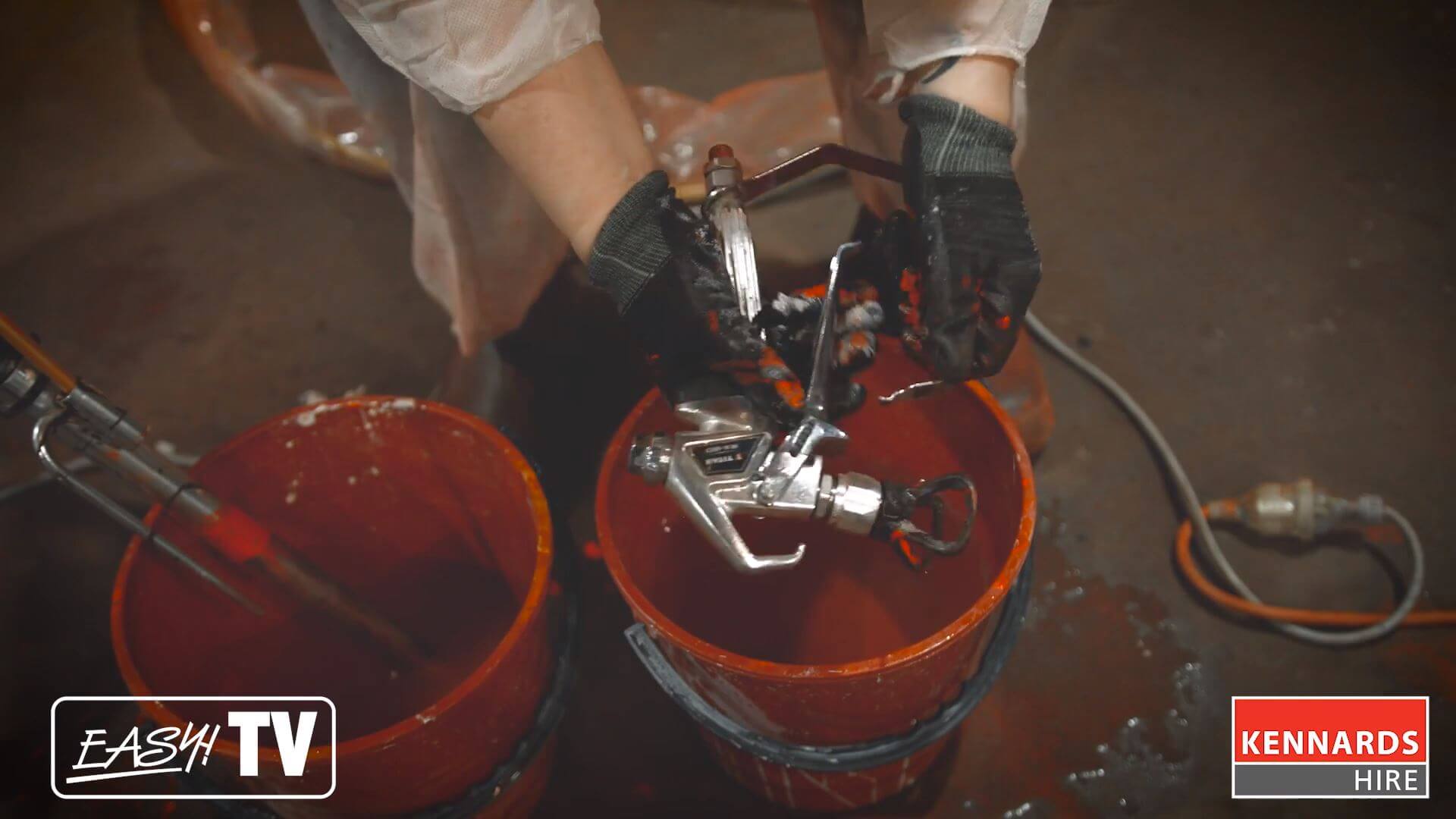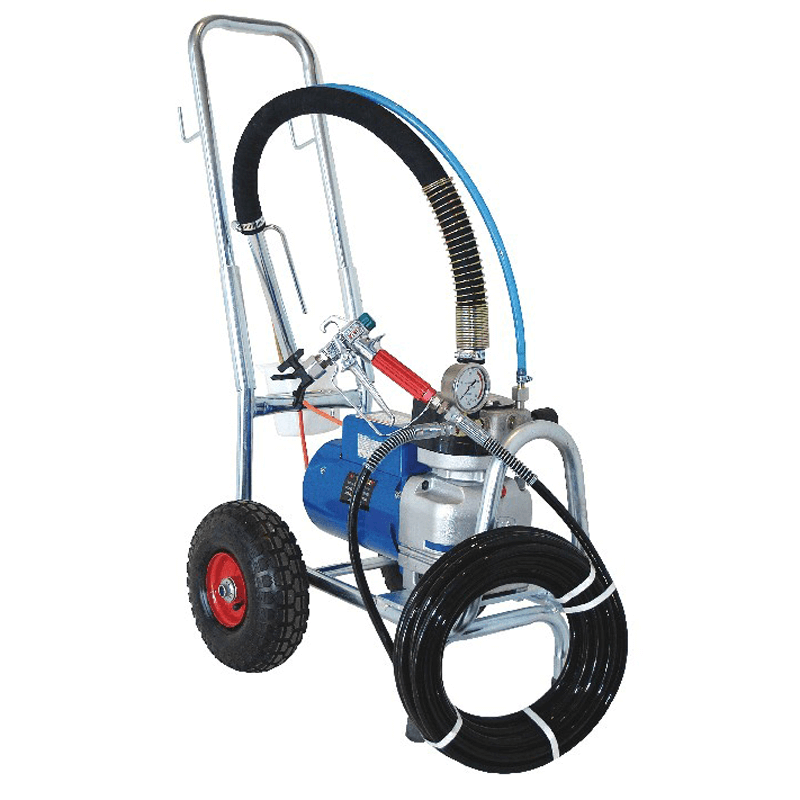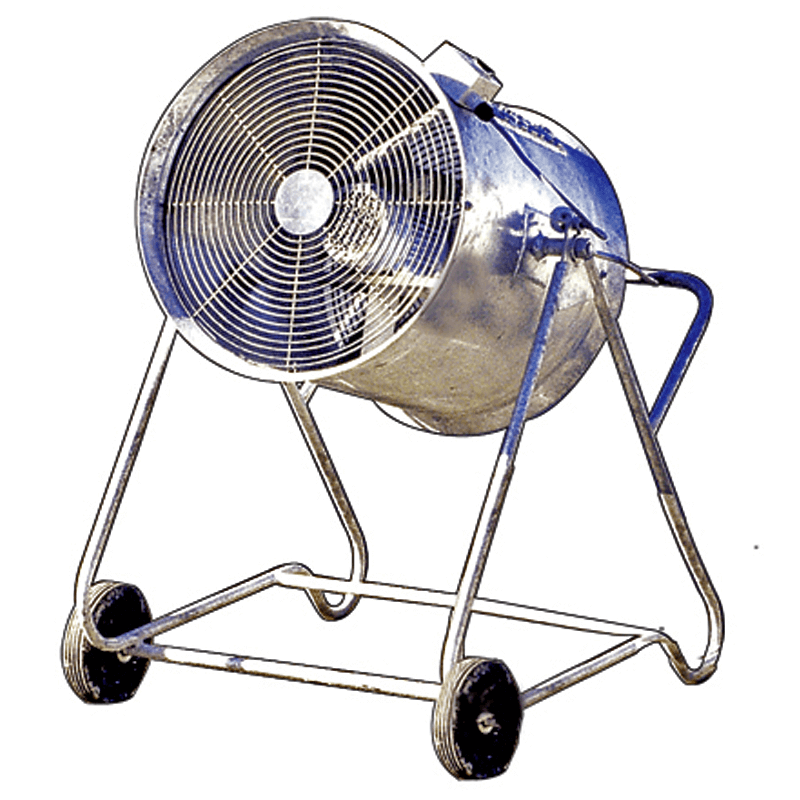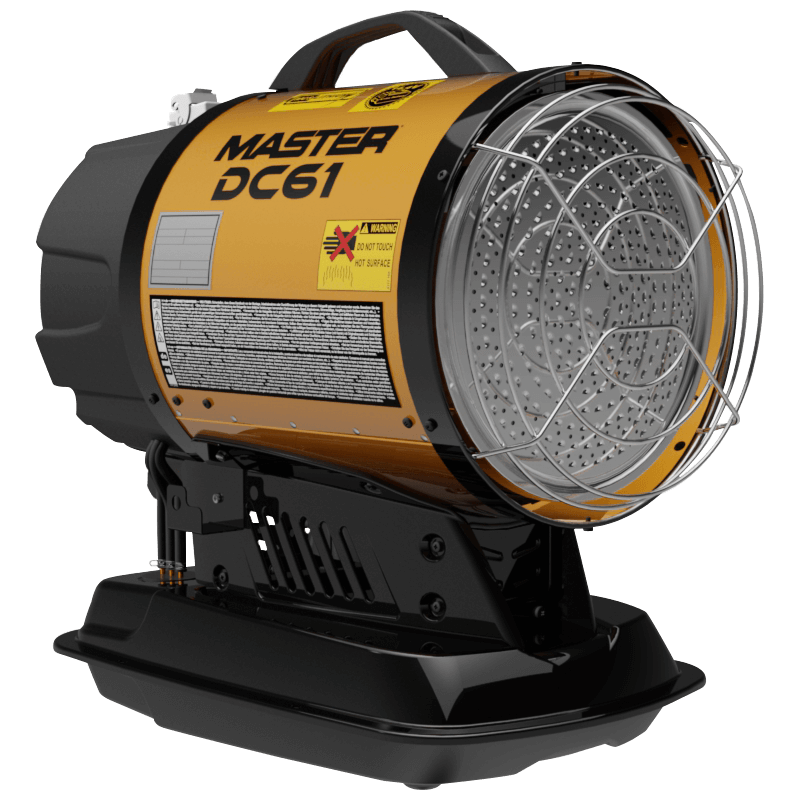How to Paint using an Airless Sprayer
How-To
Airless spraying machines pump out paint under high pressure. Essentially, they’re like a pressure washer, but with paint instead of water.
They’re great for uneven surfaces that a paint roller might not be able to cover properly.
Here’s how to use an airless sprayer for water-based paint in four easy steps.
(If you’d like to use another type of paint, speak to the team at your local Kennards Hire branch for advice)
The equipment you'll need
For painting you’ll need a:
- Airless Sprayer
- Fans or heaters to make drying easier and faster
- Goggles
- Dust mask
- Gloves
- Coveralls
If you have any questions about our equipment or need advice on the best equipment to use, the team at your local Kennards Hire branch should be able to help you.
For more information get in touch with your local branch today.
Steps
Step 1 - Prepare the work surface
First, remove any surface dirt and cobwebs. You could use a pressure washer to clean the surface, but give it ample time to dry.
Next, tape over any areas you don’t want to get paint on, like electrical outlets.
Handy tip: When you’re painting outside, check the recommended weather conditions on the paint tin. You don’t want it to be too hot or cold, or too windy.
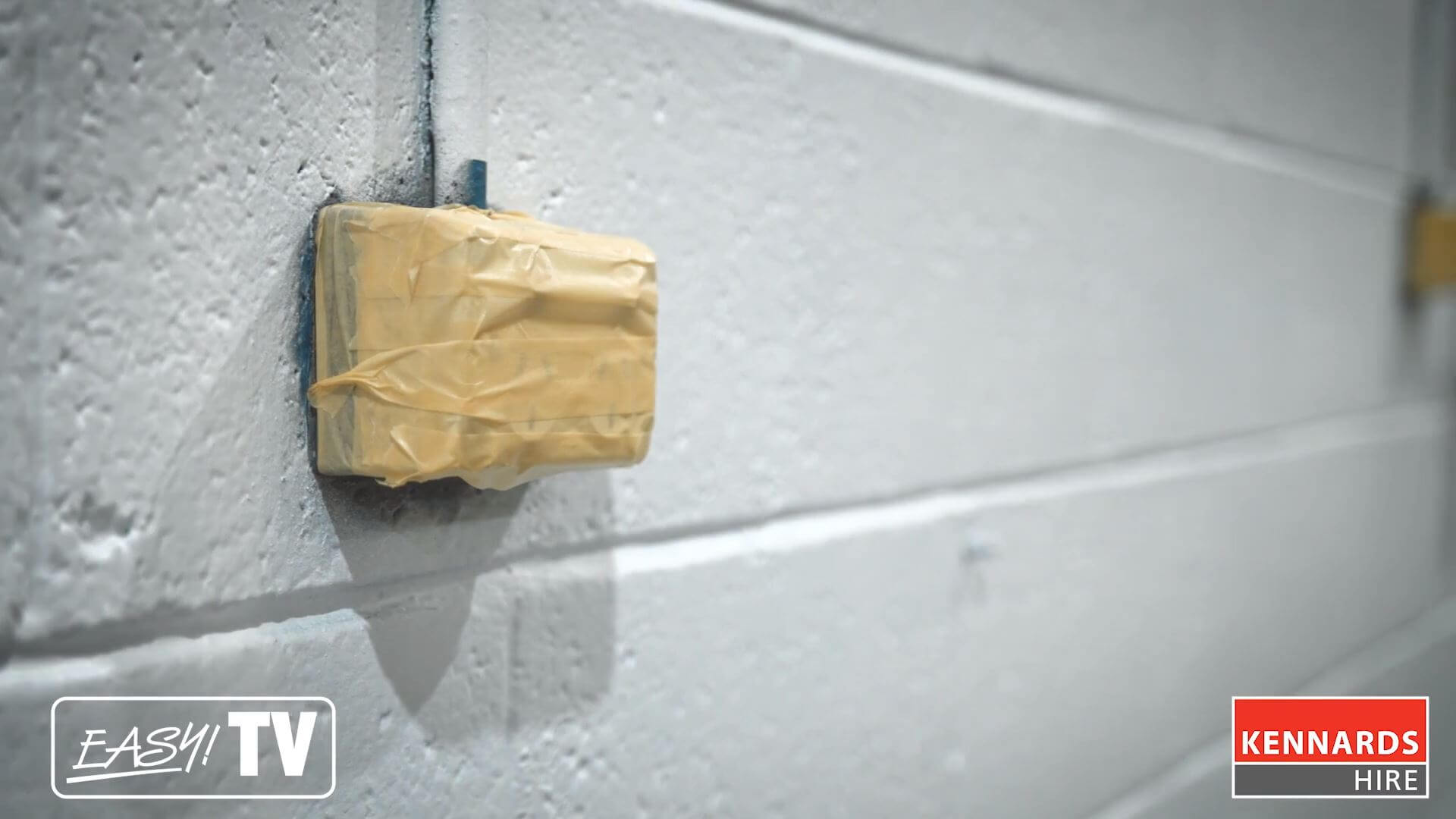
Step 2 - Prime the machine
Once your surface is clean, you’re ready to prime the machine.
Use fresh paint that’s well-mixed. Old paint can have a skin on it or lumps that block up the spray nozzle.
Insert the intake and return hoses into the paint tin. The intake hose sucks up the paint and sends it out through the spray nozzle. The return hose puts any excess paint from the pump back into the paint tin to make sure there’s no waste.
Safety tip: Before priming the machine put on your safety gloves and glasses.
Make sure the spray nozzle is locked by pushing the nozzle trigger forward and clicking the lock.
Make sure the return valve and intake valve on the machine are both turned all the way left.
Now start the machine and turn the return valve slowly to the right. This primes the hose.
Next, turn the pressure valve slowly to the right.
Safety tip: Injecting yourself with paint is a big safety hazard. The paint comes out at extremely high pressure, so always point the nozzle away from yourself and others. Make sure the nozzle trigger is locked in the safety position when not in use.
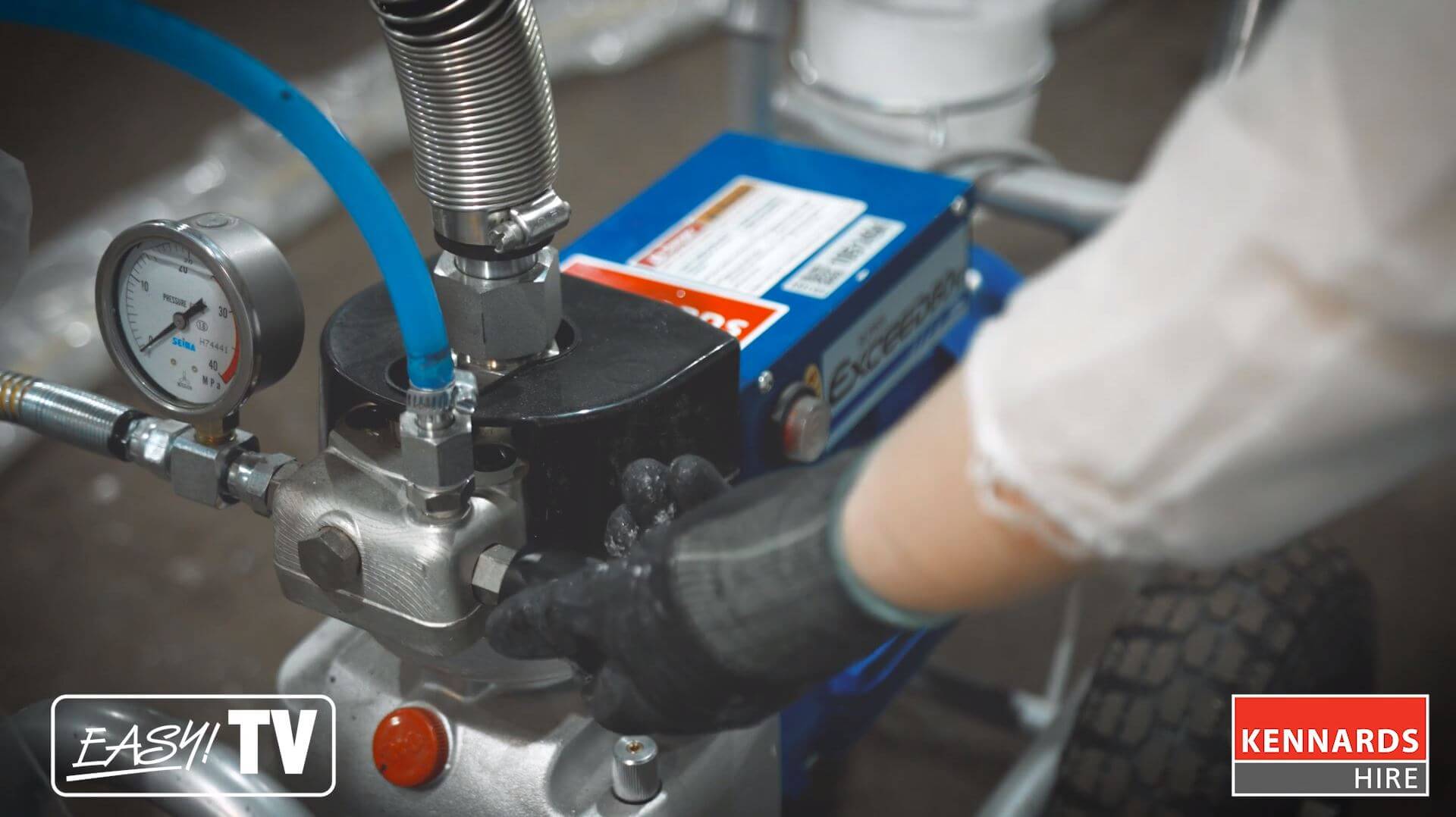
Step 3 - Spraying
Before spraying, put on your dust mask.
Now you’re ready to test the sprayer to make sure you have correct pressure. If pressure is too low, you will get ‘tracking’ which means a heavy top and bottom line. If the pressure is too high, you will get drips.
Spray any corners first. Use a piece of cardboard to shield the adjacent surfaces that you don’t want to paint yet.
Hold the nozzle 30 centimetres from the surface and start moving your arm before pulling the trigger. Move at a constant pace with a slight overlap to cover all the surface.
If you’re painting textured surfaces or fence posts, you may need to do a few coats at different angles to cover all the surface.
If painting indoors, you can use fans or heaters to speed up drying. This is especially handy when it’s cold or humid.
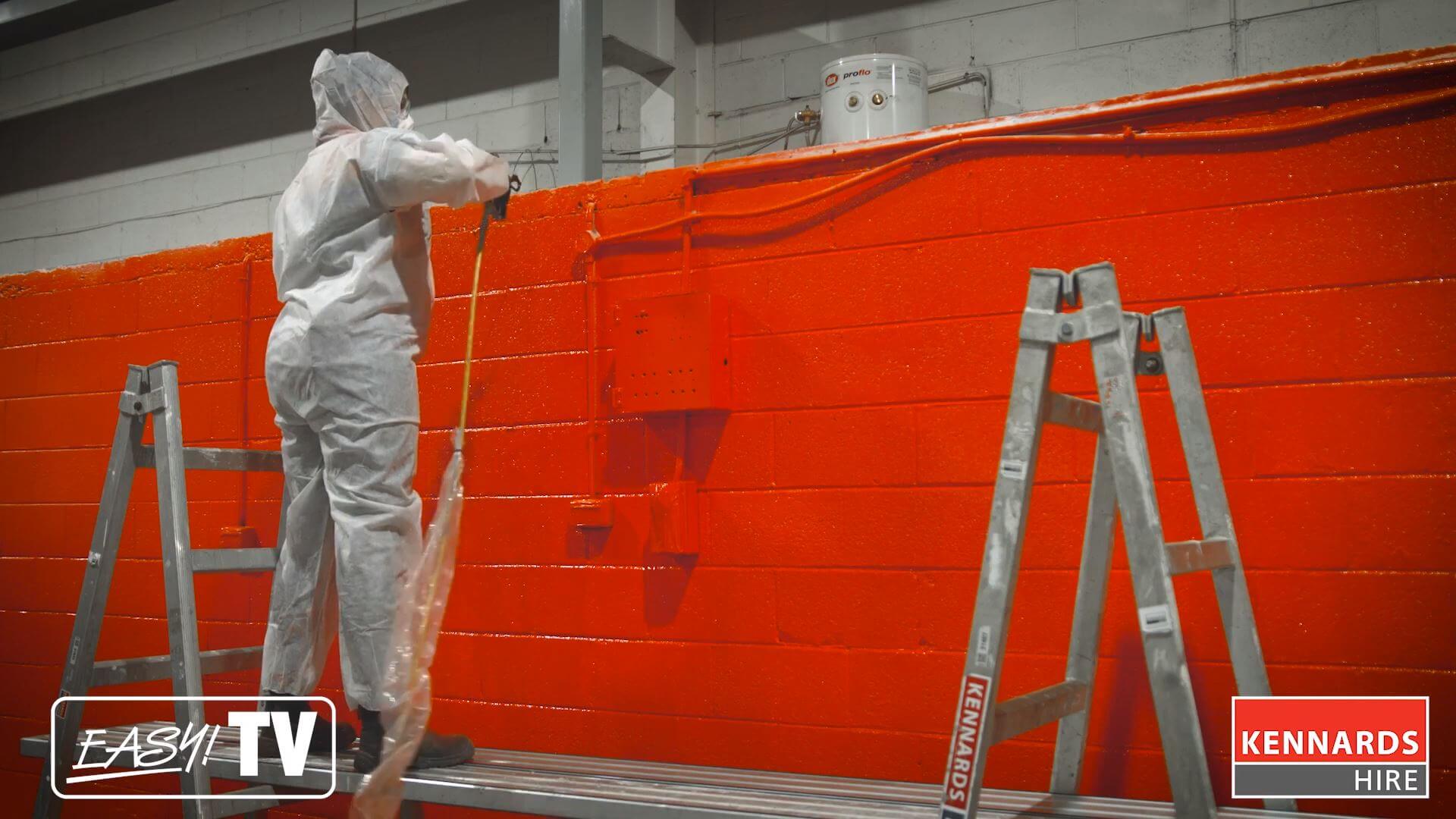
Step 4 - Cleaning the machine
When you’ve finished you need to flush the paint out of the machine. This is a similar process to priming the machine, except you use water.
You can first reclaim a significant amount of paint by putting the intake hose into an empty bucket. Keep the return hose in the paint tin and turn the machine on. Any paint in the system will return to the paint tin. Once there’s no more paint coming out of the return hose, turn the machine off.
Next, you need a bucket of clean water and an empty bucket. Your intake hose goes into the water, and the return hose goes into the empty bucket.
Run through the priming process again (step 2) until the water coming out of the return hose is clear.
Next, clean the paint line. Decompress the nozzle gun to make sure there’s no pressure inside. Then unscrew the gun from the hose and put it into a bucket of water to gently clean the tip and filter.
When you see water coming through the hose direct it into a bucket. Allow the water to run until it’s clear.
Refit the gun onto the hose and spray water through the nozzle to clear residual paint.
